2011 Hyundai Equus Review [Video]

Over two decades ago Lexus surprised the world, catching the established German automakers off guard with the LS400. All these years later and the Toyota luxury arm has risen from being mocked as a pretender to the court of elite car ownership to a serious rival, thanks not only to its products, but also due to a commitment to service and reliability.
FAST FACTS
| 1. The Equus is Hyundai’s new $58,000 flagship luxury sedan targeted at the full-size luxury market, which is dominated by cars like the Lexus LS, BMW 7 Series and Mercedes S-Class. |
| 2. With a proper RWD setup, the Equus is powered by a 385-hp 4.6L V8. |
| 3. Standard equipment includes Navigation, an adjustable air suspension, intelligent cruise control, heated and cooled front seats, a reclining heated rear seat, privacy screens and a 608-watt 17-speaker audio system. |
| 4. The $6,500 Ultimate package adds a power trunk lid, rear seat entertainment system with 8-inch screen, cooled rear seats, a fridge, forward view camera and four-person seating arrangement with a reclining rear passenger seat with leg rest and massaging feature. |
| 5. Soon Hyundai will update the Equus with a 429-hp 5.0L V8. |
Enter Hyundai and its new flagship sedan, the Equus. Having already garnered praise for the Genesis, allegedly competing against cars like the BMW 5 Series and Mercedes E-Class, the Equus takes aim at the top of the luxury ladder, the S-Class and 7 Series, vehicles synonymous with the world’s elite.
Can Hyundai, a company that seems to be doing absolutely everything right, pull off another Lexus? Perhaps, but they’ll have to do better than just keep up.
HYUNDAI GETS THE LUXURY SEDAN FORMULA RIGHT
At first glance all the pieces seem in place. It’s rear-wheel drive and is powered exclusively with a V8 engine. It’s also enormous, stretching 203.1-inches end to end (longer than an extended wheelbase Lexus LS) and is nearly a full lane wide at 74.8-inches (thicker than an S-Class). That amounts to excessive interior room with lots of space to be chauffeured around in.
It also looks the part, with a front-end design mid-way between a Lexus LS and Mercedes S-Class. It’s imposing and luxurious, though hardly memorable or distinctive. Hyundai made the decision to do without the large hood ornament on U.S. spec models; likely a wise call as the style is a bit too traditional for an up-and-coming brand like Hyundai to pull off. Then again, it would have made passers by take notice. For a car this original, we were shocked at the lack of attention it attracted.
Get the Flash Player to see this player.
The Equus is more than just a big grille, however, with massive headlights and LEDs up front, impressive high-grade paint and some big chrome wheels – which are a bit gaudy but at least help the car stand out. Hyundai even made its best effort to hide the car’s origins, with just one “H” badge on the trunk.
SOFT AND SPACIOUS RIDE
Whether driving or riding in the back, the Equus continues to deliver successfully against competitors. It’s whisper quiet – so much so in fact that we suspected a window had been left down a crack on the next car we tested, as the noise entering the cabin was significant by comparison.
The seats are soft and comfortable, both in terms of cushioning and the quality of the leather. Spend an hour and a half commuting home and you’ll arrive refreshed, as we did, surprised that even a gridlocked late afternoon in a rainstorm did little to sour our mood. With a car as comfortable as the Equus, you’ll already feel rested and at home, long before you’ve arrived.
While the rear seats were made use of during our video shoot, sadly none of the AutoGuide staff volunteered to be a personal driver for the week, so we can only imagine just how much more enjoyable the Equus would be commuting in the reclining rear seats – especially with the free iPad Hyundai is equipping each model with.
We were disappointed, however, to discover that our test model did not come with the iPad owner’s manual, despite Hyundai having pumped-up the bonus feature, complete with its own Equus app and related services. Instead, in the glove box we found the usual tomb of a book.
In its home market of South Korea you’re likely to see executives being shuttled around in the back, but models sold on our shores are almost certain to be piloted by their owners. That being said, the car’s driving characteristics are much more important here. Steering is expectantly light, although the brakes are excessively tuned to match, with very little by way of initial bite. Yes it makes for limo smooth transitions, but patience can lead to panic when significant stopping power is required.
An adjustable air suspension with variable dampers comes standard and pressing the sport button on the center console firms the car up considerably – which delivers a more ideal drive for all but highway cruising. The limo can be raised and lowered as well, although with the default lower setting delivering almost enough ground clearance to hop a curb, unless you plan on using the Equus instead of your F-150 to get to the ranch, we can’t think of a reason why you’d need it.
As for the engine itself, it’s as smooth and quiet as the suspension, with the 4.6-liter “Tau” V8 making 385-hp and 324 lb-ft of torque, mated to a six-speed automatic it hits 60 mph in 6. 4 seconds and achieves 16/24-mpg. When it comes to Equus ownership, patience will be rewarded with Hyundai already planning to upgrade the powertrain to a 5.0-liter direct-injection unit with around 430-hp and an 8-speed automatic that should help improve both acceleration and fuel economy.
DRAWBACKS: DETAILS AND TECHNOLOGY
A serious rival up until this point, in the true luxury segment, the Equus comes up short. In two important areas, namely interior materials and high-tech electronics, the Korean Benz is no Benz at all.
We found no issues with the leather, and the assembly of components is first rate, but some of the other materials used are lacking. We’ve seen better wood trim in a 1970s basement and the use of plastic on the center stack cheapens the experience. True, there are nice metal kick-plates when you enter the cabin, excellent stitched leather on the doors and a large piece of aluminum used for the center console, but the control knob for the navigation and infotainment is cheap to the touch, the heated steering wheel is only hot on the leather portion and, worst of all, when we ran the Equus through a car wash, some water slipped through. It was a minimal amount and our camera man didn’t mind, but we bet if it was your wife sitting in the passenger seat, all dolled up for a night out, she’d be furious. And finally, the dash and center stack lack the individuality and creativity of design that should be standard in this segment.
Are we being nit picky here? Absolutely. And without apologies, as buyers in this range expect the best and we can guarantee they will look at the Equus with an even more skeptical eye. There’s an unmistakable feel that the Equus is already a few years old, which it is. Introduced here this year, it’s been on sale since 2009 in Korea.
As a flagship, the Equus brings new technology and features to Hyundai, but hardly to the segment. We’ve already discussed the suspension features, and there aren’t a lot of others. Standard equipment does include intelligent cruise control that can keep the car’s distance from the vehicle ahead, although it’s not an all-speed system that works in stop and go traffic, like the one found on the BMW 7 Series. Apart from that, the only other real feature is lane departure warning.
Additional standard features do include heated and cooled front seats with a driver massage function that uses the lumbar system. There are also rear and side privacy screens, the latter of which can be raised and lowered on the first touch of the power window switch, rather than needing their own button.
In many ways the Equus is more about what you get (and can get) as a back seat passenger. The rear passenger seat gets a reclining function and can operate the seat ahead to make more room. Upgrading to the Ultimate Package (the only option and priced at $6,500) brings with it a four seat arrangement with an 8-inch screen for rear seat passengers, plus the passenger side rear seats gets a recliner-like leg support, massaging function, as well as a cooling function for both rear seats. And don’t forget the fridge. Other items include a power trunk lid (this really ought to be standard) as well as a forward-view camera to see out and around tight corners.
EQUUS OFFERS UNPARALLED SERVICE PROGRAM
While all nice options, none are really innovative. Hyundai has saved that card for the way it deals with potential customers and clients thanks to its “Your Time, Your Place,” and “At Your Service” programs where the automaker will bring the car to you for a test drive. Owners will also be treated to no-charge maintenance for five years or 60,000 miles as well as a valet service where your vehicle will be picked up from your home or office and returned to you, or a loaner provided if you need one. Plus, there’s that iPad, which serves as an electronic drivers manual and with a pre-loaded Equus app allows you to check out features of the car and even book service appointments.
THE VERDICT
One way Hyundai hopes to attract buyers is through attractive pricing of its new flagship luxury sedan, although the numbers also serve as fair warning that not even Hyundai thinks this is a serious competitor to the über sedans of Germany. Starting at $58,000 it undercuts its nearest rival, the Lexus LS by over $8,000 and is $35,000 (the price of a Genesis) less than a Mercedes S550.
Instead, the Equus is perhaps a more appropriate rival for 5 Series and E-Class buyers looking for extra space without spending the big bucks. It’s just barely in the rearview of the Lexus LS, which itself is half a decade old and on the verge of retirement. Other possible rivals include the new Infiniti M, the aged Acura RL, and Lincoln MKS. Hyundai might even pick up a few Cadillac DTS or STS customers.
So will Hyundai pull a Lexus and surprise the Germans? Not yet. In fact, while a decent enough car, the Equus lacks the attention to detail and originality to pull a Lexus on Lexus. Will future versions make up the difference? Most likely. That is, unless Hyundai calls it a stunt and pulls a Phaeton on us.
A solid first effort, whether you’re cruising the streets of Stuttgart or Beverly Hills, good enough doesn’t cut it at this level.
RELATED READING
2009 Hyundai Genesis
2009 Acura RL
2009 Lexus LS600hL
2009 BMW 750i
2011 Audi A8 4.2 FSI: First Drive
LOVE IT
- Soft quiet ride
- Enormous rear seat
- Big luxury for a small price
- Amazing service commitment
LEAVE IT
- Some low-grade interior trim materials
- No real technology innovations
- Lacking in overall design (inside and out)

With AutoGuide from its launch, Colum previously acted as Editor-in-Chief of Modified Luxury & Exotics magazine where he became a certifiable car snob driving supercars like the Koenigsegg CCX and racing down the autobahn in anything over 500 hp. He has won numerous automotive journalism awards including the Best Video Journalism Award in 2014 and 2015 from the Automotive Journalists Association of Canada (AJAC). Colum founded Geared Content Studios, VerticalScope's in-house branded content division and works to find ways to integrate brands organically into content.
More by Colum Wood

















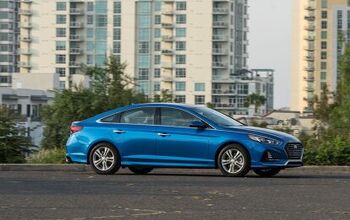
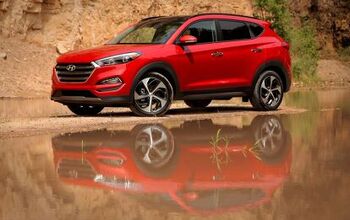
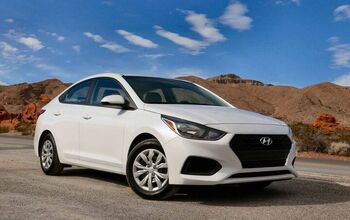

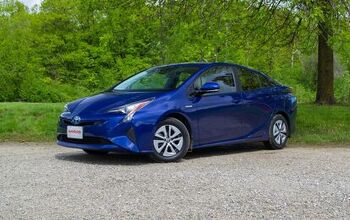
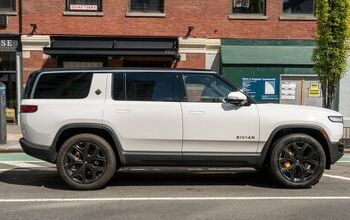


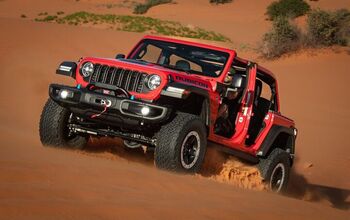
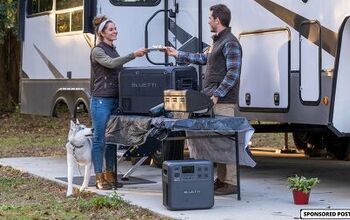
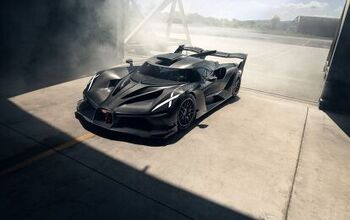

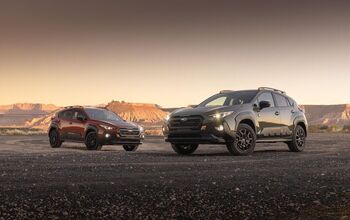
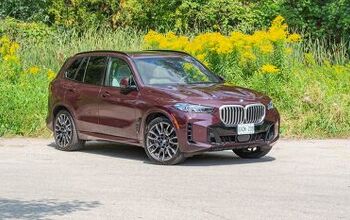

Comments
Join the conversation